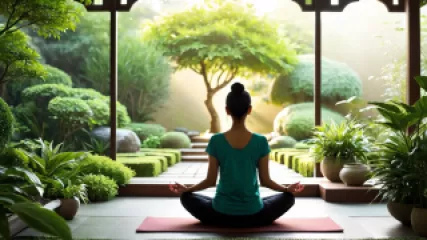Mastering Mindfulness Meditation: The Ultimate Guide
Introduction
Welcome to the ultimate guide on mastering mindfulness meditation. In this comprehensive article, we will explore everything you need to know about mindfulness meditation, from its origins and benefits to practical techniques and tips for incorporating it into your daily life. Whether you are a beginner or have some experience with meditation, this guide will provide you with the knowledge and tools to deepen your practice and reap the numerous rewards of mindfulness.
Section 1: Understanding Mindfulness Meditation
What is Mindfulness Meditation?
Mindfulness meditation is a practice that involves focusing your attention on the present moment without judgment. It is rooted in ancient Buddhist traditions but has gained popularity in recent years as a secular practice for promoting well-being and reducing stress. The core principle of mindfulness meditation is cultivating a non-reactive awareness of your thoughts, emotions, and sensations as they arise.
The Origins of Mindfulness Meditation
Mindfulness meditation traces its roots back to the teachings of Gautama Buddha, who emphasized the importance of being fully present in each moment. Over the centuries, different meditation techniques and practices have emerged within various branches of Buddhism. However, it was not until the late 20th century that mindfulness meditation began to be widely studied and practiced outside of traditional Buddhist contexts.
The Benefits of Mindfulness Meditation
Mindfulness meditation offers a wide range of benefits for both mental and physical well-being. Research has shown that regular practice can reduce stress, anxiety, and depression, improve focus and concentration, enhance emotional regulation, and promote overall resilience. It can also have positive effects on sleep quality, immune function, and interpersonal relationships.
Section 2: Getting Started with Mindfulness Meditation
Preparing for Your Practice
Before diving into mindfulness meditation, it's important to create a conducive environment for your practice. Find a quiet and comfortable space where you can sit or lie down without distractions. Consider using props such as cushions or blankets to support your posture. Make sure to turn off any electronic devices that might interrupt your session.
The Basic Technique: Breath Awareness Meditation
One of the most common techniques in mindfulness meditation is breath awareness. To begin, find a comfortable position and gently close your eyes. Direct your attention to the sensation of your breath as it enters and leaves your body. Notice the rise and fall of your abdomen or the sensation of air passing through your nostrils. Whenever your mind wanders, gently bring your focus back to your breath without judgment.
Dealing with Distractions
During your meditation practice, it's natural for distractions to arise. Thoughts, emotions, and physical sensations may capture your attention and pull you away from the present moment. When this happens, acknowledge the distraction without judgment and gently guide your awareness back to your breath or chosen point of focus. Be patient with yourself and understand that this is an integral part of the practice.
Building Consistency and Duration
Consistency is key when it comes to mindfulness meditation. Start with short sessions of 5-10 minutes and gradually increase the duration as you become more comfortable. Aim to practice every day, even if it's only for a few minutes. Set a regular schedule that works for you, whether it's in the morning, during a lunch break, or before bedtime.
Section 3: Deepening Your Mindfulness Meditation Practice
Exploring Different Meditation Techniques
While breath awareness is a foundational technique, there are numerous other meditation practices you can explore to deepen your mindfulness journey. These include loving-kindness meditation, body scan meditation, walking meditation, and mindful eating. Each technique offers its own unique benefits and can help you cultivate mindfulness in different aspects of your life.
Expanding Awareness Beyond Formal Practice
Mindfulness is not limited to formal meditation sessions alone. The goal is to carry the practice into your daily life, becoming more present and aware in all your activities. You can incorporate mindfulness into routine tasks like washing dishes or taking a shower by paying attention to the sensory experience and letting go of distracting thoughts. Additionally, practicing mindful listening and communication can greatly enhance your relationships.
Virtual Mindfulness Workshops and Retreats
If you're looking to further immerse yourself in mindfulness, consider participating in virtual mindfulness workshops or retreats. These immersive experiences provide an opportunity to learn from experienced teachers, engage in guided meditations, and connect with a supportive community. Virtual formats offer convenience and accessibility, allowing you to deepen your practice from the comfort of your own home.
Section 4: Mindfulness Meditation for Various Aspects of Life
Mindfulness for Relaxation
One of the primary benefits of mindfulness meditation is its ability to induce relaxation and reduce stress. By cultivating a non-judgmental awareness of the present moment, you can let go of worries about the past or future. Incorporating mindfulness into your daily routine can help you create a sense of calm and serenity, even in the midst of a busy and chaotic world.
Mindfulness for Focus and Concentration
In today's digital age, maintaining focus and concentration has become increasingly challenging. Mindfulness meditation can help train your mind to stay present and resist distractions. By regularly practicing mindfulness, you can enhance your ability to sustain attention, improve memory, and boost productivity in various aspects of your life.
Mindfulness for Positive Thinking
Our thoughts have a powerful impact on our emotions and overall well-being. Mindfulness meditation allows you to observe your thoughts without judgment, creating space for more positive and constructive thinking patterns. As you develop a deeper understanding of your mental patterns, you can choose to cultivate thoughts that are supportive, compassionate, and empowering.
Summary
Congratulations! You have reached the end of the ultimate guide to mastering mindfulness meditation. We have explored the origins and benefits of mindfulness, provided practical techniques for starting and deepening your practice, and discussed how mindfulness can enhance various aspects of your life. Remember, mindfulness is a lifelong journey, and each moment offers an opportunity to be fully present. Embrace the practice with patience, curiosity, and self-compassion, and you will undoubtedly experience the transformative power of mindfulness meditation.






